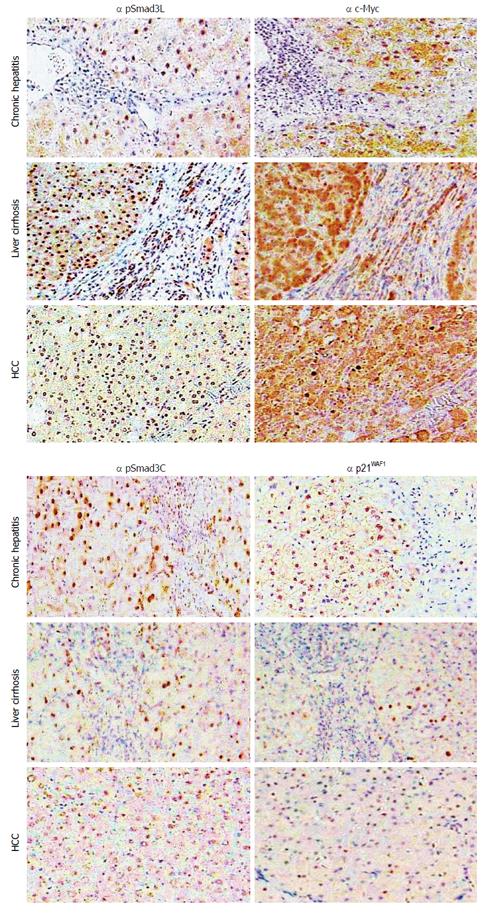Copyright
©2014 Baishideng Publishing Group Inc.
World J Gastroenterol. Nov 7, 2014; 20(41): 15018-15027
Published online Nov 7, 2014. doi: 10.3748/wjg.v20.i41.15018
Published online Nov 7, 2014. doi: 10.3748/wjg.v20.i41.15018
Figure 2 Hepatic fibro-carcinogenesis: reciprocal change in linker phosphorylated and COOH-terminally phosphorylated Smad3 pathways.
The linker phosphorylated Smad3 (pSmad3L)/c-Myc pathway shows increasing prominence in hepatocytes, as hepatitis C virus (HCV)-infected liver progresses from chronic hepatitis, through cirrhosis to hepatocellular carcinoma (HCC). In contrast to the intense staining for pSmad3L and c-Myc, the COOH-terminally phosphorylated Smad3 (pSmad3C)/p21WAF1 pathway staining decreases in hepatocytes as liver disease progresses toward HCC.
- Citation: Murata M, Yoshida K, Yamaguchi T, Matsuzaki K. Linker phosphorylation of Smad3 promotes fibro-carcinogenesis in chronic viral hepatitis of hepatocellular carcinoma. World J Gastroenterol 2014; 20(41): 15018-15027
- URL: https://www.wjgnet.com/1007-9327/full/v20/i41/15018.htm
- DOI: https://dx.doi.org/10.3748/wjg.v20.i41.15018









